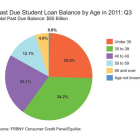
College Assistance Program Praised By Coalition for Evidence-Based Policy
|
Earlier this month, the Coalition for Evidence-Based Policy – a nonprofit organization that frequently assists Congress in identifying successful social program models – gave H&R Block’s College Financial Aid Application Assistance Program a “Top Tier” rating denoting “sizable, sustained benefits to participants and/or society.”
According to a recent Top Tier Evidence Initiative report, the H&R Block program – which provides streamlined personal assistance to low-to-moderate income families with dependent children that wish to complete college financial aid applications, such as the Free Application for Student Aid (FAFSA) – resulted in a notable increase in retention rates for students that took advantage of the program. The Coalition for Evidence-Based Policy stated that students that had H&R Block assistance in completing their FAFSA forms were almost 30 percent more likely to attend college for two consecutive years than students that did not receive program assistance and approximately 36 percent more likely to receive a federal “needs-based” assistance, such as the Pell grant. The Top Tier Evidence study consisted of a four-year, multi-site trial that tracked more than 1,000 college students in Ohio and North Carolina. According to the Coalition for Evidence-Based Policy, the estimated per-person cost for the H&R Block intervention is approximately $90 – resulting in an aggregate $375 in Pell Grant allotments for students given assistance by tax professionals in completing their application forms.








